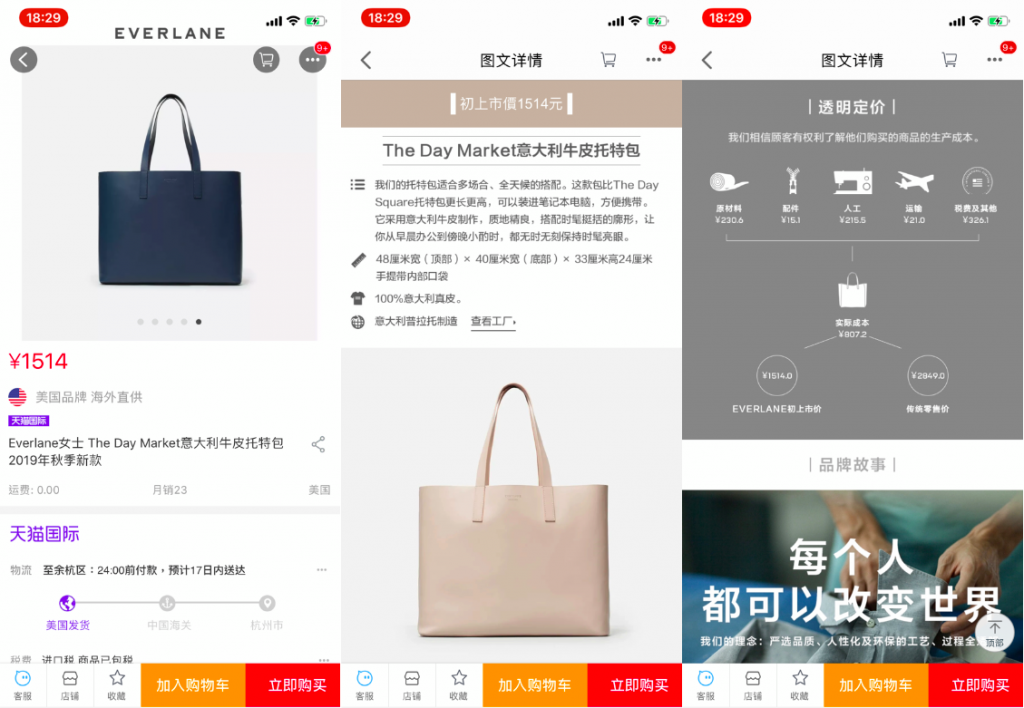Key Takeaways:#
As it is expected to make up to 50 percent of the luxury market by 2025, China is crucial to the industry’s sustainable goals.
When reaching China’s young, climate-conscious customers, luxury and fashion must not fall into the trap of “educating” them from a condescending, Western-centric point of view.
Brands need to combine sustainability messaging with quality aesthetics, competitive prices, and impeccable service to beat the cutthroat competition because sustainability won’t work alone.
In the wake of the COP26 summit, the rising pressure of irreversible climate change has convinced luxury and fashion to build a more sustainable future. And China, whose consumer share is expected to make up 50 percent of the industry revenue by 2025, is crucial to these environmental ambitions.
Reaching China’s sustainability-conscious consumers, however, is no easy task. For many years, the fashion industry has associated Chinese consumers with constant sales growth while considering them to be lagging on most global sustainability conversations.
Despite sustainability being one of luxury and fashion’s most-hyped marketing concepts today, brand-led engagement efforts in China have been few and superficial, with brands often translating a global marketing brief in Chinese without applying any local context. As a result, few have succeeded in creating messages that resonate with China’s sustainability audience.
On September 12, Everlane, the sustainable American label par excellence, announced its China exit by closing its Tmall flagship store. Although its reasons for exiting are complex, the brand's sustainability communication problem played a relevant role.
On Xiaohongshu, one user (@姜黄色海参) stated: “Thanks to Everlane’s radical transparency, we now know a lot of their products are made in China. From a sustainable point of view, wouldn't it be much more efficient to shop directly from local brands that use the same Chinese factories?” Another user (@Xu.Geuo) wrote: “The only way to survive in China is to make appealing products with an acceptable price point. If brands want quick fame, they can tap into all the buzzy celebrity ambassadors. Besides that, all the other marketing talk about sustainability will get marginalized.”
Adding to the slow growth of sustainability movements in China is the state media’s increasingly open criticism of Western-centric greenwashing. Earlier this month, much official media coverage of the COP26 summit accused wealthy Western nations of having no “moral right” to force developing countries to reduce pollution output, stating that these sustainability talks were an empty marketing stunt. For instance, Greta Thunberg, the poster child of global youth climate activism, has long been seen as a negative figure (a privileged ingénue) on Chinese social media. Netizens refer to her as “the Environmentalist Princess (环保公主),” suggesting that the native of Sweden has a condescending tone regarding the topic.
China and its younger consumers are indeed interested in sustainable lifestyles in their own ways. In a leader group gathering this July, China launched its “Duel Carbon” targets to ensure the nation peaks its carbon emissions before 2030 and achieves carbon neutrality before 2060. Among younger generations, plenty of Gen-Z customers still shop for fast fashion, but many are also educating themselves about environmentalism and are eager to find more sustainable alternatives. To reach them effectively, brands must not fall into the trap of using one generic marketing brief.
Don’t “educate” consumers#
Today, shoes made from recycled plastic and sweaters that claim to use eco-certified wools have become familiar hallmarks for sustainable fashion brands that want to engage a climate-conscious customer base. But brands should resist the temptation to impress Chinese audiences with the brief they use in Western markets.
Many terms and claims from common sustainable marketing playbooks are inherently Western-centric. Take Everlane’s “radical transparency,” for example; the brand’s pricing model exposed a product cycle that first produces fashion in South-East Asia or China and then commercializes it back in North America, which some Chinese customers find paradoxical.

Moreover, some certifications used in sustainable marketing contain political connotations that could irritate China’s growingly nationalistic consumer public. For instance, brands claiming their membership to the Better Cotton Initiative, which refuses the use of Xinjiang-grown cotton (presumably associated with labor abuse), are seen as political rivals to China’s official stance.
Instead, brands can influence via concrete and visible sustainability commitments and contextualized content. According to a sustainability report by Jiemian media, 47 percent of Gen-Z consumers want to see carbon calorie counts and resource metrics on product labels soon. Like their global peers, Chinese consumers are becoming savvier about brands’ surface-level greenwashing and now pay more attention to a product’s real ecological impact.
Sustainability cannot stand alone#
“If a fashion brand claims to be sustainable, I will favor the brand since it makes me feel that the brand is at the avant-garde," said Yijun Cai, a Shenzhen-based finance professional who has become interested in sustainability through influencer recommendations. "But at the same time, I do consider if the product is good enough and whether it has fast delivery and free returns.”
As the data from a sustainability report by Impact Hub Shanghai shows, China’s young, green consumers are elusive. While 71 percent of the interviewees said they wanted to support sustainable products, only 29 percent have bought them. When it comes to sales conversions, good design, durable quality, and overall e-commerce experiences were also at the top of consumers' minds.
In the case of Everlane, hundreds of social media comments under the brand’s exit news quoted its “lack of free returns and efficient customer service” as a significant drawback. And amidst China’s hypercompetitive market, sustainability messaging is only a part of what will ultimately make a brand stand out.
Local customers with sky-high expectations for the shopping experiences can easily sniff out false greenwashing tactics today. Therefore, businesses must make sure their products are sustainable to the environment while also being useful for the customer.

